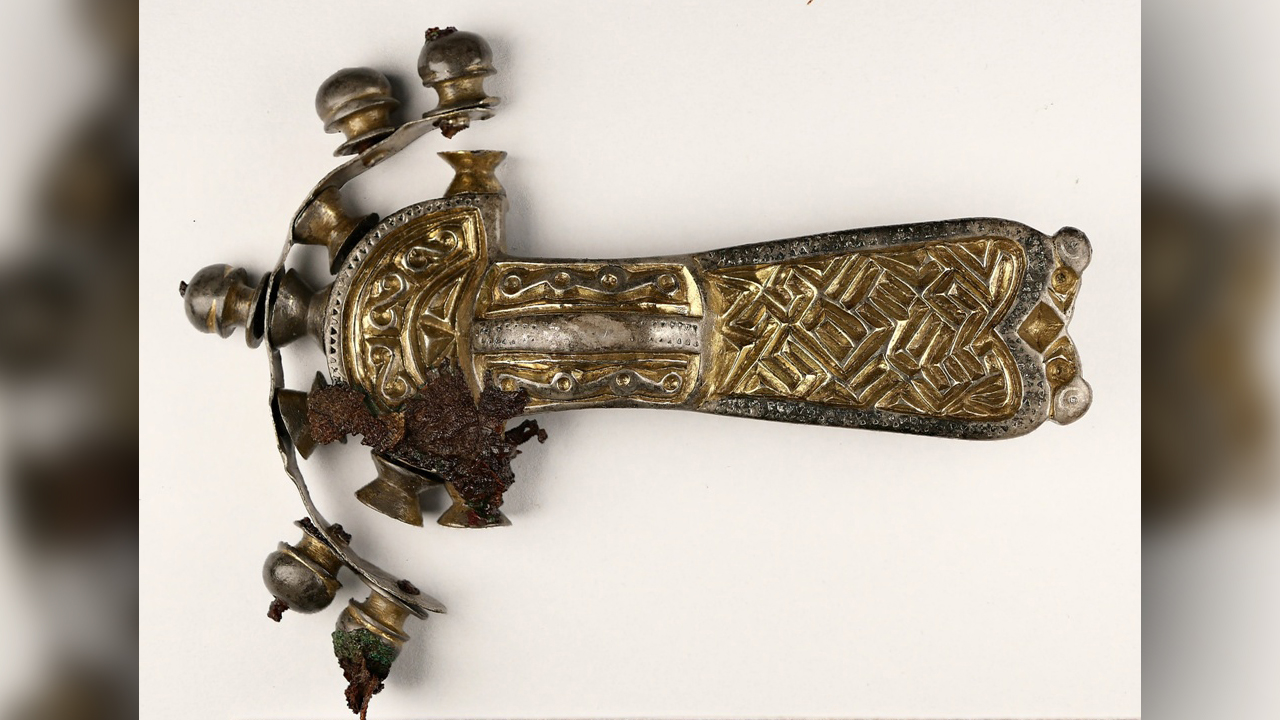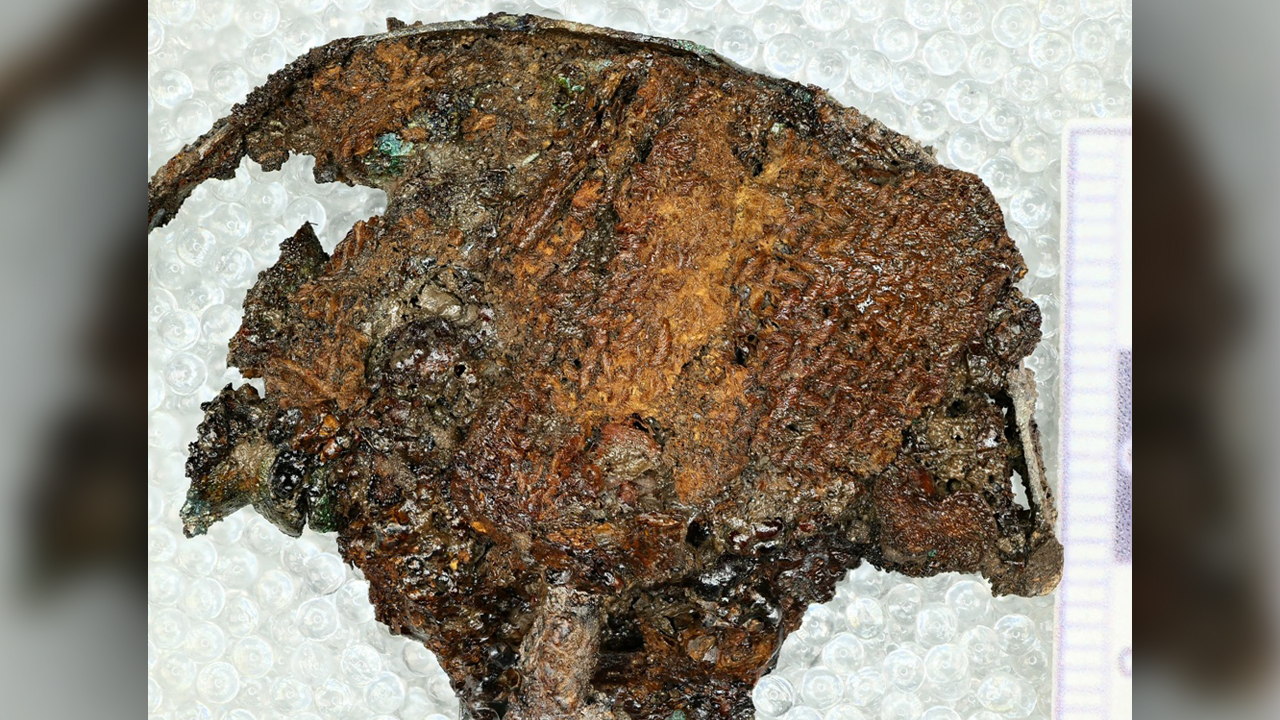Gold and precious gems unearthed in a 5th-century grave in Bohemia
Other skeletons nearby had been looted, but the woman's grave was untouched.

About 1,600 years ago, a woman in eastern Bohemia (now the Czech Republic) was buried with a treasure trove of precious objects, including a headdress and four silver buckles that were inlaid with gold and studded with semiprecious stones.
Archaeologists with the East Bohemian Museum in Hradec Králové, Czech Republic, found the fifth-century burial in 2019, and they recently described their initial findings in a statement. One exceptional find was the headdress, decorated with golden discs. Glass beads, a bone comb, a ceramic pot and an iron knife also lay near the remains.
Five other graves at the burial site contained skeletons, but looters picked them clean of any precious artifacts, plundering the corpses soon after burial. Only a handful of mundane funerary objects in those graves, such as knives and a sword, were untouched, the scientists reported.
Related: Image gallery: Ancient treasure trove discovered in Russia
Researchers estimated that the woman was between 35 and 50 years old when she died. They identified pieces of fabric on the silver buckles that belonged to two different textiles; one was likely the article of clothing that the buckles clasped together, and the other may have been a coat or cloth that covered the woman's body at the funeral. The scientists also detected traces of leather and fur on the buckles, possibly from another garment. Analysis of the ceramic pot revealed chemical traces of certain fats and acids, suggesting that it was used for cooking and storing meat.
All of the people in the graves were between 16 and 55 years old when they died, but most of the skeletons were so badly damaged by looters that it was impossible to determine the sex of the individuals. However, close examination of individual bones did reveal some clues about the health of the deceased people.
"In one individual, traces of cancer were found on the skull and pelvis," the researchers said in the statement. Some bones indicated signs of arthritis, and one person's leg bones showed that they carried muscle mass asymmetrically, hinting that they favored one leg — perhaps as the result of a stroke.
Get the world’s most fascinating discoveries delivered straight to your inbox.
Further tests will include radiocarbon dating, to more accurately establish the ages of the graves. Evidence in the ratios of oxygen isotopes (variations of the same element with different numbers of neutrons) could further reveal if the individuals were local to the region or if they migrated there from another location. Other chemical analyses of the bones could tell scientists what these people were eating and if their diets changed dramatically during their lifetimes.
The researchers also expect "significant results from the DNA analysis," which will be conducted with scientists at the Max Planck Institute in Leipzig, Germany, and the Institute of Archaeology and Museology at Masaryk University in Brno, Czech Republic, according to the statement.
"Perhaps we will learn more about the kinship of the dead and where they came from," the scientists said.
Originally published on Live Science.

Mindy Weisberger is a science journalist and author of "Rise of the Zombie Bugs: The Surprising Science of Parasitic Mind-Control" (Hopkins Press). She formerly edited for Scholastic and was a channel editor and senior writer for Live Science. She has reported on general science, covering climate change, paleontology, biology and space. Mindy studied film at Columbia University; prior to LS, she produced, wrote and directed media for the American Museum of Natural History in NYC. Her videos about dinosaurs, astrophysics, biodiversity and evolution appear in museums and science centers worldwide, earning awards such as the CINE Golden Eagle and the Communicator Award of Excellence. Her writing has also appeared in Scientific American, The Washington Post, How It Works Magazine and CNN.



